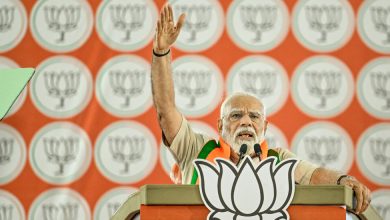British Museum Announces Plan to Stop Thefts

Two months after it announced the firing of a curator suspected of stealing artifacts from its stores, the British Museum on Wednesday unveiled a $12-million project to plug holes in its records and its online catalog.
Addressing a British parliamentary committee on Wednesday, Mark Jones, the museum’s interim director, said that inventory failures contributed to the theft of about 2,000 artifacts, including gems, semiprecious stones and glass items.
Jones, who was appointed in September, said that the fired curator targeted items that hadn’t been cataloged, because they were seen as low value at the time they entered the museum’s collections.“These 2,000 objects were only known to one person, and that person decided to take advantage of that,” Jones said.
The British Museum’s digital catalog already includes some 4.5 million items. Over the next five years, an additional 1.3 million items would be added to that total, Jones said.
The project will take five years and cost around 10 million pounds, George Osborne, the museum’s chair, told the committee. “We hope to raise that money privately,” Osborne said.
Yet even when the project is completed, the catalog would not contain detailed records for every item the British Museum owns, Jones and Osborne said at the hearing. “There’s only about six million that we think it’s sensible to try to deal with as fully documented objects,” Jones said.
Items that will not be individually cataloged include distinct parts of “big archaeological assemblages,” Jones said, such as the parts of a collection of one million stone fragments excavated in North Africa. There are also a million or so cigarette cards in the museum’s storerooms, Osborne said, and it didn’t make sense to document each of them separately.
Problems with the British Museum’s record keeping have been known for decades. In 1988, the National Audit Office, a British government watchdog, said in a report that the museum’s stocktaking was “unsatisfactory.”
The announcement of the thefts in August also turned the spotlight on the record keeping and security policies of other museums in Britain. In October, British newspapers reported that 540 items had been lost, destroyed or stolen from the National History Museum, and that the Imperial War Museum was missing 559 items from its collection of 33.5 million objects.
A spokesman for the Imperial War Museum said in an email that the “vast majority” of its losses occurred “many years, or even decades, ago” and were “typically low-value, mass-produced items” including posters. The museum completed a full inventory in 2017, the spokesman added.
Jones said on Wednesday that by already having digital records for half its collection, the British Museum was “ahead of most museums operating on the scale that we do.”
It had made other changes to prevent future looting, he added, including forbidding staff members from entering some storerooms alone. “That in itself,” Jones said, “should ensure that the kind of theft that has happened couldn’t happen again.”
Staff morale had been “shaken” by the scandal over the summer, Jones said, adding that it was his priority to turn that around.
In September, the British Museum went live with a website with pictures of similar objects to the missing items and called on members of the public to get in touch with information that could lead to their return. So far, the museum has recovered around 350 of the 2,000 items. A museum spokesman said in an email that all of those had come from Ittai Gradel, the rare gem dealer who first alerted the British Museum to the losses.
Those could soon go on display, to meet public interest in the case, Osborne said on Wednesday, adding: “We have the makings of a good exhibition that was not previously planned.”




